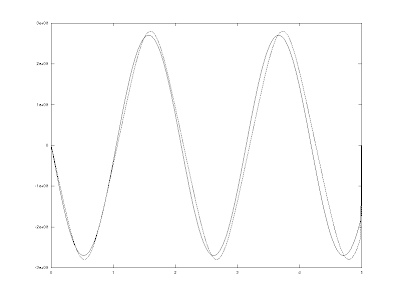Einstein released many theories during his scientific career, but it was the publishing of his two theories of relativity that literally shook the foundations of physics. The theories proposed by him still stand today even though there are many individuals who have tried to challenge them. It started in 1905 with the publishing of his special theory of relativity and was later followed by the general theory of relativity in 1915 . Each of these theories are comprised of their own sets of equations, laws and principles that explain why things act the way that they do, from the largest of galaxies right now to the smallest of particles.
Einstein was in his mid-20's when he published his special theory of relativity which become an absolutely essential tool for scientists, physicists, theorists and experimentalists around the world today. Some of the concepts that were introduced were time dilation, length contraction, and his famed theory of mass-energy equivalence with the introduction of E = K+ mc2. One of his other concepts, and the subject of this blog entry, was Einstein's introduction of the cosmic speed limit which states that no physical object or information can travel faster than the speed of light in a vacuum.
Shortly after the publishing of his special theory of relativity, he immediately began working out equations that encompassed geometric views of gravitation and introduced new and exciting concepts that replaced Newtonian mechanics, which had lasted 250 years. Scientists had been able to calculate low energy effects of gravity for centuries with Newton's theory, but until Einstein, what actually caused it had remained a mystery. Einstein's general theory showed the world that gravity was caused by the bending of space and time. So in short, it's not a gravitational force that is holding us all firmly down to the ground but it's space that is actually pushing you down. The theory explained such phenomenon as the bending of light by gravity and opened up the entirely new field of cosmology. The theory also made entirely new predictions, such as the Big Bang theory and also black holes, which continue to be a rich source of research for scientists.
Needless to say, Einstein's theory has with stood the test of time for almost a century and if there's one data-point out of place, we would have to throw the entire theory out. So everywhere we look into the heavens, Einstein's theory of general relativity comes right on the spot.
Last week, an international team of researchers and scientists reported that they have recorded sub-atomic particles appearing to travel faster than the speed of light. Over a period of three years, neutrinos were shot from the particle accelerator at CERN in Switzerland to a detector in Italy (the OPERA - Oscillation Project with Emulsion Tracking Apparatus) about 500 miles away. What the team found interesting was that the neutrinos arrived around 60 nanoseconds quicker than the light would have traveled. This recent result from the accelerator at CERN, which seems to contradict Einstein's theory of relativity, has generated enormous interest, among scientists as well as the public. However, not much has been written about precisely what this means for relativity itself.
Dr. Kaku's Universe,

















